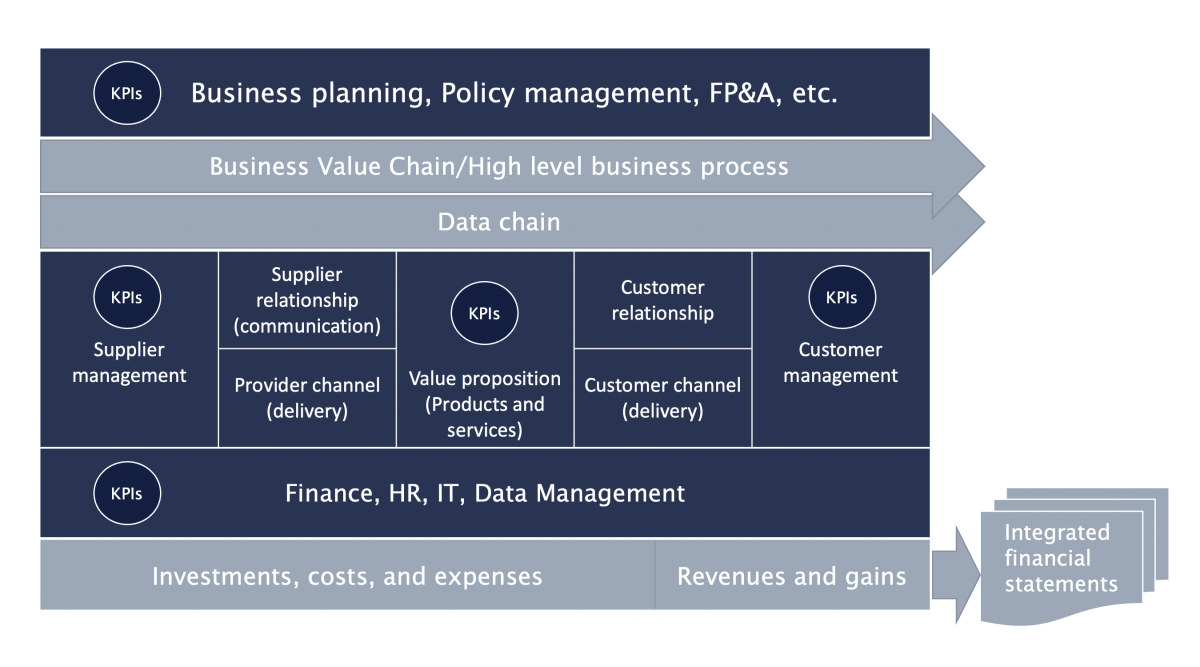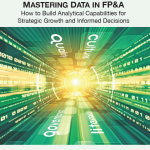A strong data strategy is crucial for FP&A teams to ensure accurate, timely and meaningful insights...

Does data management for FP&A differ from data management for other business functions? Or does data management equally serve the needs of every business function within a company?
Data management is a business capability that safeguards data assets in order to get value from them. FP&A professionals are some of an organisation’s most important data and information users. The most challenging and essential they perform is performing scenario planning and analysis. It assists in analysing the influence of various internal and external factors or drivers on a company’s financial statements and key performance indicators (KPIs). The scenario planning outcomes then help managers of multiple business units and various organisational levels make business decisions. The quality of these decisions depends on the quality of the delivered information. Scenario planning and analysis is one of the results of the “data-driven company” concept. Is this business concept easy to implement? No, it is not. The cliché “becoming data-driven” has been flying around for many years. However, its realisation requires a lot of effort and resources.
In this article, we will:
- Demonstrate the dependencies between the requirements of scenario planning and analysis and data management tasks.
- Describe the role of FP&A professionals in performing data management tasks related to scenario planning.
Data Requirements for Scenario Planning & Analysis
Scenario planning and analysis, in its fullest sense, requires knowledge of the following:
- Decisions are to be made by managers of various business lines and at different organisational levels using integrated financial statements and KPIs.
- Relationships between external and internal factors and financial statements and KPIs.
Let’s consider these requirements in detail.
Every organisation has common business capabilities and corresponding business units. Figure 1 demonstrates the well-known business value chain concept.

Figure 1: Business and data value chains
The organisation creates business value by implementing a business value chain. Suppliers deliver the input required for creating value. The business produces products and services that represent the value proposition to the company’s customers. Data chains support business value chains by transforming raw data into meaningful information.
Along the business value and data chains, a company bears investments, costs, and expenses and receives revenue and gains. Integrated financial statements and key performance indicators assist in decision-making across all business capabilities and at different organisational levels: strategic, tactical and operational.
Scenario planning and analysis intends to discover the dependencies between internal and external factors and, based on them, to predict various business outcomes using financial statements at different organisational levels.
Scenario planning and analysis demand a lot of various data from internal and external sources.
Data Management Viewpoint on Scenario Planning & Analysis
From a data management viewpoint, external and internal factors and financial statements are sets of data elements that reside in various IT assets like applications, databases, integration tools, and so on. Data chains are sets of IT assets that gather, transform and deliver data. Figure 2 demonstrates a simplified example of calculating one strategic KPI, “Net profit,” along one data chain. In reality, a company may use multiple data chains and dozens and hundreds of IT assets to deliver financial statements and KPIs.

Figure 2: A simplified example of calculating a KPI along a data chain
To deliver multiple integrated data sets and discover and demonstrate the links between data elements, a company must have a very advanced level of IT technology and data management. The larger the company, the more technically complex this task is. Various vendors offer advanced solutions to implement Extended Planning and Analysis (xP&A) and scenario planning and analysis as a part of it.
Data management can assist in several ways to build complex solutions to implement complex scenario planning and analysis solutions.
Data Management Support for Implementing a Scenario Planning and Analysis Eco-System
Data management must deliver all information required for scenario planning. Data chains perform multiple processes, as shown in Figure 3. We call these processes a “data lifecycle.” Designing and implementing a data lifecycle in multiple data chains is the key task of data management

Figure 3: The key processes of a data lifecycle
1. Gathering information and data requirements
Scenario planning requires data from various sources. Adding new data sources and adjusting data chains to consume new data is time and resource-consuming. FP&A professionals very often play the role of data users. Therefore, they must provide their information requirements. For example, for scenario planning, FP&A professionals must indicate the complete list of KPIs for various business units that are to be included in scenario planning. They can also indicate business drivers to be taken into account. Data management professionals must translate information requirements into data requirements. It means that they must find the applications in which this information and data resign.
2. Modelling and describing data
To implement data requirements, the data must be described using data models. To integrate data from multiple sources, a common data model for scenario planning must be built. This means that sourcing data must include data related to the identified business drivers that influence financial statements.
Data modeling is one of the data management capabilities. However, business professionals like FP&A must assist in developing these models by providing business definitions and data and explaining the relationships between different terms.
3. Data sourcing
Required data is not always available within the company. For example, FP&A professionals may need information from external agencies like Dun & Bradstreet. They must provide their requirements regarding the potential data source, content, historical periods and delivery conditions.
4. Data transformation
Data undergoes transformations on its way from a source to the scenario planning solution, including mapping, integration, calculation, aggregation, etc. As Figure 2 shows, to derive the value of the “Net Revenue” element, data about customer information, orders, invoices and others must be integrated. FP&A professionals must provide business rules to be applied to data integration.
5. Data validation
Data must meet the quality requirements to make the scenario planning results trustworthy. Only complete or correct data will lead to accurate models and the right business decisions. FP&A professionals must first provide their requirements for the quality of delivered data. In the case discussed above, FP&A professionals must define their requirements for the quality of the “Net Revenue” information element. For example, what are the expected delivery terms, the range of its allowed consistent with the previous period values, and so on? They also must participate in data validation to prove the correspondence of delivered data to the original requirements.
6. Data delivery
For scenario planning purposes, data must be delivered in near or real-time. Enabling data delivery in near or real-time could require severe changes in IT technology. FP&A professionals must be realistic in their requirements and define critical data for optimising data delivery.
7. Data analysis
Complex scenario planning solutions demand comprehensive data analytics, including various data science technologies. FP&A professionals must learn to collaborate with data science professionals in order to understand the data patrons and translate them into recommendations for decision-making.
The above-discussed tasks are just examples of the complex data management capabilities that require the participation of various business professionals, including FP&A.
Conclusion
In order to successfully implement scenario planning and analysis in the company’s practices, FP&A executives must do the following:
- Sponsor a data management-related initiative to set up a formal data management function.
- Clearly articulate their data-related requirements from a data user perspective.
- Motivate and train internal FP&A staff to understand and perform all data management-related tasks assigned to business subject matter experts.
This article was first published on the SAP Blog.
Discover expert insights on data strategy, governance, and implementation at Data Crossroads and Data Crossroads
Academy.
Subscribe to
FP&A Trends Digest

We will regularly update you on the latest trends and developments in FP&A. Take the opportunity to have articles written by finance thought leaders delivered directly to your inbox; watch compelling webinars; connect with like-minded professionals; and become a part of our global community.






